Late Summer
In very hot, dry summers, and most home vegie growers will have disappointments with their
tomatoes, beans, and even zucchinis and cucumbers.
In very high temperatures many plants - including tomatoes and beans - don't set fruit. And on the
zucchinis, the tiny developing fruit behind the flower buds can overheat and drop off before the flowers
get to open, so even in a garden with plenty of bees and other pollinators the crops can be poor.
With a string of very hot periods and no rain to speak of, the challenge is to keep the garden alive.
Placing icecream boxes in the hand basin, kitchen sink and laundry trough will allow you to collect
rinsing water to use on your plants. If you don't water often enough the soil can dry out and be very
hard to wet again, so once a week may not be often enough. Try a decent soaking every few days.
Light sprinkles will not be a lot of use. Hand watering allows you to see which plants need extra t.l.c.
Despite the dryness and heat, this is the time to plant seeds for winter vegetables but you will need to
ensure that they do not dry out.
If the temperatures soar into the mid-thirties and higher, cover your crops with shade cloth, old sheets
or terylene curtaining to prevent burning.
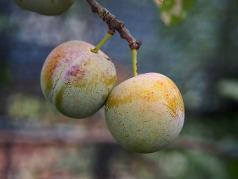
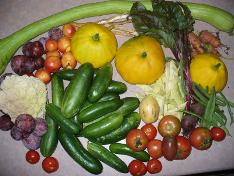
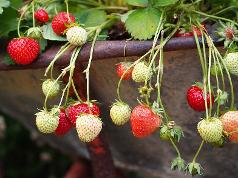
February
Ready to harvest now: beans, zucchini, cucumbers, tomatoes, early chilies, lettuce (although most
loose leaf varieties will go to seed quickly in the summer heat: save the seeds for new crops), Tuscan
Black Kale, basil, rocket, silverbeet.
Also plums, strawberries and remaining lemons and Murcott mandarins.
Some cabbages may still be holding their own in the vegie patch, and if the broccoli has escaped the
attention of the white butterflies, you'll be picking it too.
Sow seeds of these vegetables: beetroot, broad beans, broccoli (check the seed packet, varieties
differ), cabbage, carrots, kale, leeks, parsley, parsnip, silverbeet, swedes and turnips.
Keep planting these vegetables and herbs for a continual supply: coriander, dill, loose leaf
lettuces, mustards and rocket. Try a new crop of climbing beans as well. If warm weather lasts well into
autumn you may be picking beans until as late as June.
You may like to experiment with some late seedlings of cucumbers and zucchini to replace older plants
that are succumbing to mildew. A long warm autumn may see you picking their fruit for some time yet.
Plant: potato tubers and garlic cloves
March
Sow now: broccoli, cabbage, carrots (some varieties), kale, leeks, parsley, silverbeet, spinach,
turnips, dill, coriander, lettuce, mustards, rocket.
Plant: garlic
Collect seeds for future crops from lettuces, parsley, rocket, parsnip, mustards, silverbeet, dill, fennel,
coriander. Beans that are past their best for eating fresh can be allowed to develop and dry on the
plants. Save seeds from the best and longest pods for next seasons sowing. Dry the others and store
for use in soups or stews.
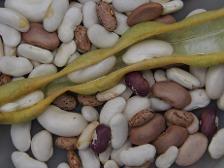
Bean seeds ready to pack away.
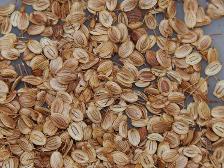
Parsnip seeds.
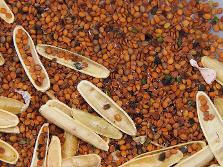
Tiny rocket seeds.
Care is needed when gathering and storing seeds. They must be fully dry before sealing in zip-lock
bags or small jars. If not, moulds can develop which will ruin the seed.
Small insects can also damage seeds. Some are very tiny, but if you look carefully you may see them
crawling among your seeds.
Seeds that you will use for culinary purposes can be frozen in their airtight containers - six hours
should kill off any insect pests.
Seed that will be used for next season's crops shouldn't be frozen - it may affect the seed viability. A
moth ball in each pack will keep bugs at bay. (Note: moth balls are poisonaous: handle with all due
care and keep out of reach of children.
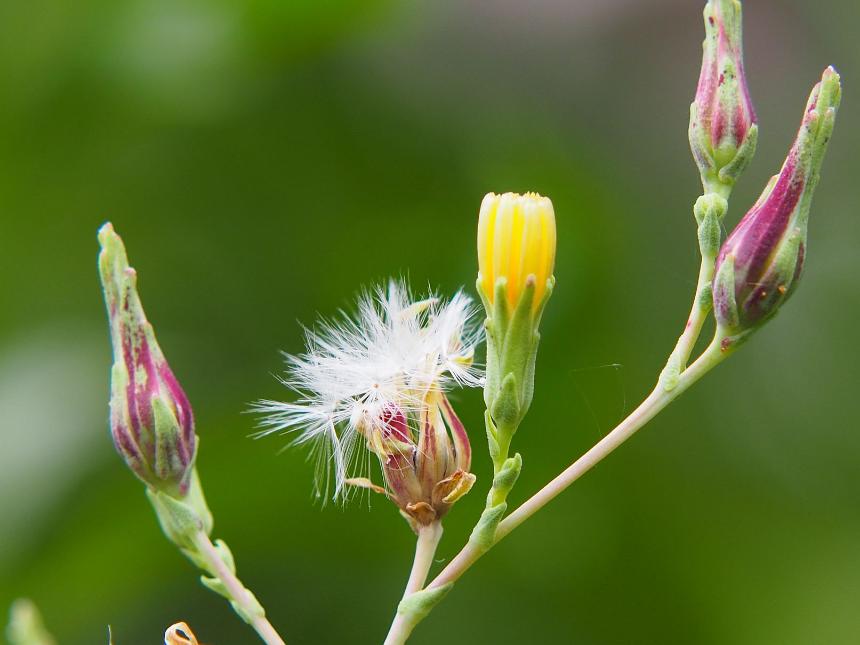
Beautiful lettuce seed head and flower.
Baskets full of zucchinis? Feeling overwhelmed?
Try Erin's recipe below and others on our recipe page:
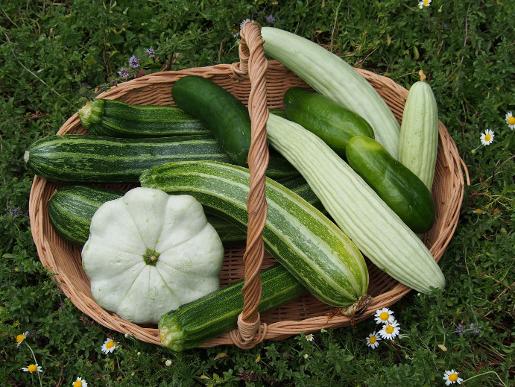
Erin's Zucchini '
Lasagne' :
1 large zucchini
200g mushrooms
2 onions
olive oil
400g can tomatoes
100g feta
fresh or dried herbs,
freshly ground pepper
Use a hand blender or equivalent to blend the tomatoes, feta and herbs. Heat to boiling point.
Thinly slice the vegetables. Saute the onions in oil until caramelised.
In a casserole dish layer zucchini slices, then mushroom slices and caramelised onion. Pour 1/3 of the
tomato mixture over this. Repeat twice with the remaining vegetables and sauce. Bake in a moderate
oven till the vegies are tender - 45-60 minutes.
Variations: Add any other available vegetables - grated carrot, thinly sliced pumpkin, eggplant,
silverbeet, kale, beans etc.
Top with grated cheese.
This is a gluten free recipe, but if you don't need to
avoid gluten, add layers of lasagne noodles to soak up the tasty juices.
Even add some chilli for an extra bite.
You might like to try this one too:
Zucchini and Lentil Soup
1 cup red lentils, well rinsed
2 onions, sliced
2 garlic cloves, crushed or grated
1 small cinnamon stick
1/2 teasp freshly ground pepper
2 bay leaves
5 cups vegetable stock
1-2 tblsp oil, butter or ghee
8-10 curry leaves
1 teasp fenugreek seeds
1/2 teasp turmeric
1 teasp garam masala
1/4 cup coconut powder in 1/2 cup warm water
1 medium zucchini, thinly sliced
200g mushrooms, thinly sliced
Simmer lentils, one onion, one garlic clove, cinnamon stick, pepper and bay leaves in stock until lentils
are well cooked. Remove cinnamon stick and bay leaves and puree lentils and onion.
Saute the second onion until caramelised. Add the second garlic clove, curry leaves, fenugreek,
turmeric and garam masala. Stir until fragrant - a minute or so.
Add the mushrooms and cook until softening. Add zucchini and lentil puree and simmer until zucchini
is tender. Add coconut milk with salt and pepper to taste and reheat.
Other vegetables work well too eg. silverbeet, beans.